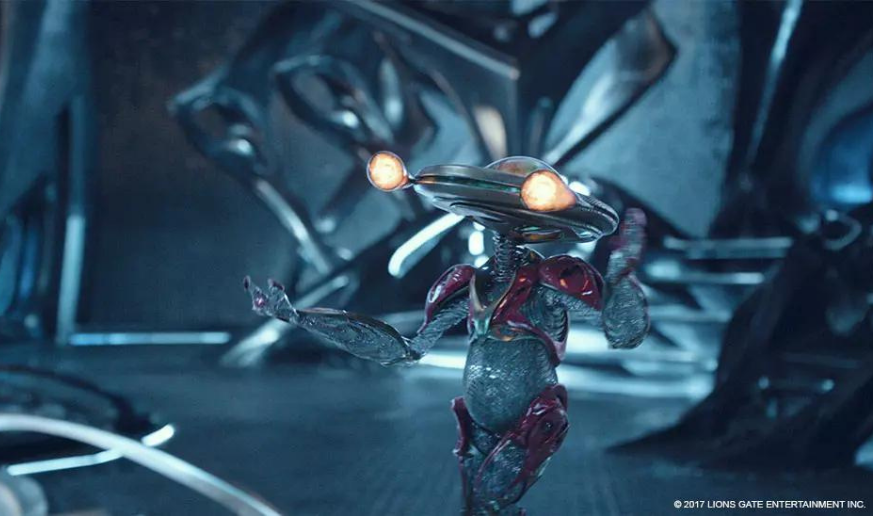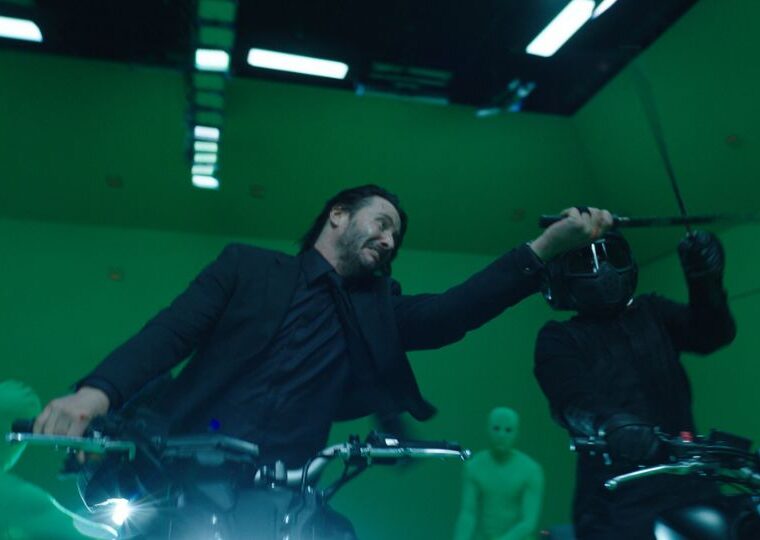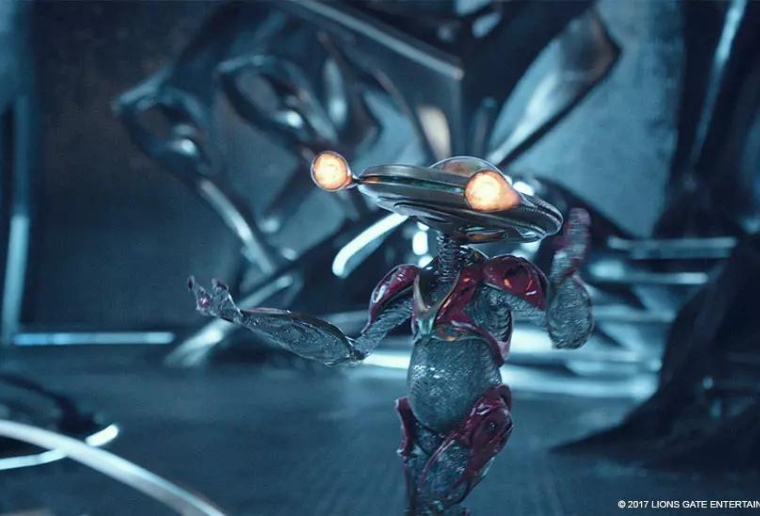Power Rangers Case Study

Case Study
Image Engine was called on to deliver over 300 complex visual effects shots on the film, ranging from the starring robot Alpha 5, voiced by Bill Hader, to an elaborate pinscreen representation of Bryan Cranston as the ancient Power Ranger Zordon.
Over the years, Image Engine has had the immense honour of reimagining many films from decades past, channeling years of nostalgia into sequels and revamps such as Jurassic World, The Thing, and Independence Day: Resurgence.
The studio’s artists were once again offered the chance to tap into their childhood on Saban’s Power Rangers, a dream project for many who grew up with the white, red, black, blue, yellow and pink heroes.
The Lionsgate reboot is based around the Mighty Morphin’ superhumans of the television series – a worldwide hit from the 1990s about a group of teenagers imbued with special powers, which continues to live on today in popular culture.
Image Engine was called on to deliver over 300 complex visual effects shots on the film, ranging from the starring robot Alpha 5, voiced by Bill Hader, to an elaborate pinscreen representation of Bryan Cranston as the ancient Power Ranger Zordon.
To make Power Rangers “Go!”, Image Engine engaged in a close-knit collaboration with director Dean Israelite and visual effects supervisor Sean Faden, drawing on recent advancements in its animation, rendering and workflow tools to ensure an experience unlike any other.
Animating Alpha 5
The creation of the Power Rangers’ zany robot sidekick, Alpha 5, formed the core of Image Engine’s work. The studio approached the fully CG character using the wealth of knowledge and experience it has built in photorealistic robot creation over several projects, including work on Neill Blomkamp’s Elysium and Chappie.
Image Engine was awarded the work after an initial ‘casting’ process in which they carried out an Alpha 5 test animation.
“Lionsgate actually tested with a whole bunch of different facilities,” details Image Engine visual effects supervisor Dave Morley. “They wanted us to define the feel and personality of Alpha 5 – to land on something that felt right for the character.”
Image Engine’s animators chose to channel the personality of actor/director Woody Allen in their Alpha 5 test. “We decided to literally copy what Woody was doing in a piece of dialogue from one of his films. That gave Alpha 5 a very neurotic characteristic – the filmmakers honed in on it and loved it.”
Ultimately, Alpha 5 was voiced and based on the performance of Saturday Night Live alumnus Bill Hader. On set in Vancouver, a greenscreen suited performer stood in for the robot to help with actor eyelines. Hader would later perform the role in a separate motion capture session. Image Engine was on hand to facilitate the capture, packaging up the digital Alpha 5 character to use as a live animation puppet.
“The resulting mocap data and witness camera footage were selected and returned to us to use as a starting point for Alpha’s acting,” explains animation supervisor Chad Shattuck, who shared duties with fellow animation supervisor Jason Snyman. “Some of the data from that session was used directly in certain shots, while other shots required new motion capture using our own Xsens mocap system – we performed some of those actions ourselves! Beyond that, several shots required us to get stuck in and animate the character by hand.”
Hader’s original motion captured performance, which was filmed on stage, proved crucial for the Image Engine team. They used the data as reference to judge different shots – which were sometimes worked on by multiple animators – ensuring total consistency in performance.
“Thanks to this, Alpha’s performance is always in character and always very lively whether he is pushed into the background or is the primary actor in the scene,” says Shattuck. “He feels like a living character seamlessly inhabiting the world with the actors.”
A fire in the eyes
Alpha 5’s personality also shines through in the design of his ‘brain’, which contains a spiralling particle effect akin to a nebula formation. The final design drew upon the concept that Alpha 5’s entire nervous system comprises a fiber optic-like structure spread throughout the body, sending pulses to the brain. Image Engine solved the technical animation of the pulses inside SideFX’s Houdini, then re-targeted them to Alpha 5’s animation rig.
Further personality was conveyed via Alpha 5’s ‘eyes’. These comprised two external bulb-like contraptions straddling either side of his head, each containing a swirling particle effect that mimics the movements of a pupil. Image Engine was able to control the scale and speed of this fiery spiral, giving subtle yet effective hints as to the robot’s inner state of mind.
“At the end of the day, it’s always about the eyes,” comments Snyman. “I remember at one point where the eyes didn’t have any blinks, for example, but as soon as we added in that tiny characteristic, much more of his personality came out. Like with Chappie, we found these little, nuanced approaches to drawing emotive performances from a metal facade.”
Introducing Zordon
Zordon is the Power Rangers’ leader and mentor – a giant face encountered by the team within the command centre of a massive vessel. Although the performance is driven by the likeness of Bryan Cranston, it is translated through a vast wall of shifting pins; essentially a large scale version of the Pin Art desk toy.
“The trick here was to define exactly what each individual pin looked like,” explains Morley. “We played around with many different shapes and even different levels of translucency. We also experimented with numerous approaches to see what worked best visually, like projecting the image directly onto the pins, effectively turning each of them into individual screens. There was a lot of evolution around ideas, but ultimately we were led by the need for the effect to look convincing from multiple angles.”
Image Engine settled on a look for the moving structure that resembles subtly carved graphite pins. Each pin was driven by performance captured footage of Cranston’s face, which was acquired by nine cameras reading his actions as he delivered Zordon’s lines. The actor needed to sit motionless in his Zordon make-up, faced by a light array as he gave the performance. He was also asked to provide a broad list of face shapes, such as a grimacing look, an “ooo” shape, or a smile. These were used to build an animation database that could effectively drive the movement of the pinscreen.
Pinning it down
The pins themselves were designed to feel kinetic and dynamic, as Morley outlines: “The filmmakers didn’t want the movement of the pins to feel as if they were driven by a smooth, precise piston,” he explains. “They wanted it to feel a little bit like there was dirt stuck in the gears, creating a sense that this technology had aged over the years and had developed some imprecision.”
A complex effect requires a complex process – the Image Engine team mitigated this using automation on many of the Zordon face shots. One such approach comprised the matching of the motion captured footage to editorial reference, and then – as CG supervisor Edmond Engelbrecht explains – “inserting that data into Zordon’s rig and making internal animation renders.”
This process was complemented by Image Engine’s proprietary asset management system Jabuka. After matching mocap and editorial reference, artists would insert it into Zordon’s animation rig using a Jabuka workflow template. Animators could then work on top of the mocap to further refine Zordon’s character and personality.
“Animation department approval on a Zordon animation would trigger automatic FX setups, implemented as Houdini Digital Assets, which would generate new geometry caches, lit and shaded renders, and Quicktimes for final review,” adds R&D lead Andrew Kaufman. “Using this system, we were able to automate a huge amount of otherwise repetitive FX tasks, combine it with the more artistic FX, and present all the data to the lighting department as a single bundle of work. That made things so much more efficient.
“In the end, our animation coordinator Alyssa Howald had created more FX dailies than anyone else on the show, because she was responsible for approving the animation dailies!”
Inside Zordon’s ship
When the teenagers first arrive at Zordon’s ship, they witness its interior sections shifting and deforming, revealing vast sections of the location via a complex set of interlocking circles.
Although huge parts of the ship were built on set, these effects and others involved large-scale digital builds by Image Engine, with the actors shot on greenscreen and composited into the shots.
The first step in this process involved rigging the interlocking set of circles to match the on-set interior production designs – individual quadrants that were made to rotate while other parts of ship interior also shifted dynamically.
“We had a really complicated rig for this effect, with all kinds of combinations of twisting and turning or taking pieces and moving them round,” notes Snyman. “However, we chose to slow everything right down, so you’d only see one turn, and then a connection of that piece, and then another turn. It was a complex effect but one revealed in gradual moments of movement.”
To render the ship environment and other CG creations throughout the film, Image Engine relied on Autodesk’s Arnold renderer. The team further supported this rendering workflow using the studio’s numerous proprietary solutions.
“We integrated Arnold seamlessly into the workflows of all departments at the Image Engine studio,” explains Kaufman. “We’ve released the backbone of this work publicly, as part of Gaffer, the open source node-based application framework for VFX at Image Engine.
“The Arnold for Gaffer integration introduces a wealth of new features, including production-quality shaders and lights, powerful, flexible workflows, and IPR, VDB Volumes, and Mesh Lights, all of which deliver massively improved final render results.”
Arnold was used for final renders throughout Power Rangers, but also for quality control renders in every other department – all the way back to matchmoving and modelling. “This extensive QC workflow was made possible by our proprietary toolset Jabuka, which was built on top of Gaffer,” says Kaufman. “Jabuka allows productions to easily manage data handovers between departments, with automated QC renders using Gaffer graphs, as well as all data versioning, dependency tracking, disk usage and cleanup, which are essential to running a show like Power Rangers smoothly.”
It’s morphin’ time!
Another section of the spacecraft’s cavernous interior comprises the central core of the command centre, where the sun-like “morphing sphere” is found. It’s here that the film’s protagonists are transformed for the first time into the Power Rangers.
Image Engine shared this sequence with visual effects studio Pixomondo, which created the Power Rangers’ suit transformations. Image Engine was responsible for the design and execution of the environment and the delivery of several dynamics effects, including the morphing sphere itself and the strands of energy that emanate from it, causing the suit transformations.
Image Engine and Pixomondo worked in tandem, ensuring the shot felt as if it had been delivered by just one vendor.
“We had to come up with a creative solution that connected the look of the energy that Pixomondo had created around the characters’ suit morphs to the look of the morphing sphere itself,” explains Morley. “We created a particulate- and volume-based solution that fired fingers of energy outward from the sphere and surrounds the kids, which was based on matchmoves of the actors. This simple link seamlessly connected our work with Pixomondo’s; it felt like the sequence had been delivered by just one vendor.”
Overall, Image Engine’s crew of 120 artists worked for seven months in what proved to be not only a fun visual effects project, but also one in which artists could re-live the thrills of the television show.
“Man, I was a huge Power Rangers fan when I was a kid,” remembers Snyman, who revelled at the chance to work on the film. “Every day after school, I got home and thought – ‘here it comes. Go, go, Power Rangers!’ So when I heard this project was on the cards I was absolutely over the moon.”
It’s a sentiment shared by Morley, who particularly enjoyed collaborating with Israelite and Faden. “It was immense fun being there on set and it was brilliant to be able to talk and collaborate directly with Dean and Sean throughout that whole process. We knew exactly what we wanted to achieve, how we wanted it to look, and how we wanted to go about it.
“That combination of passion for the project and everyone being on the same page is what makes for a successful VFX project. And Power Rangers was undoubtedly a success – the results are there to see on the screen.”

















































